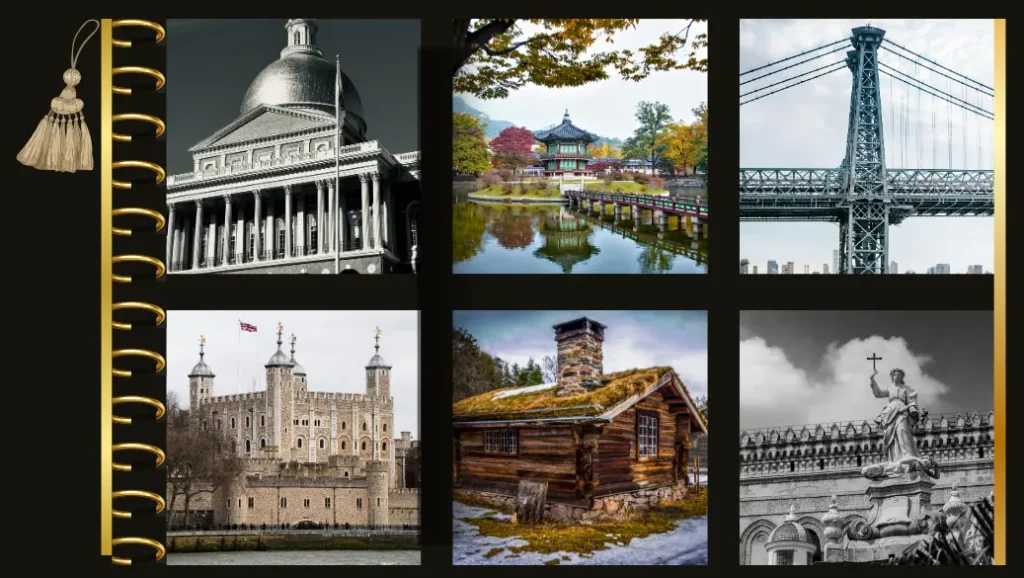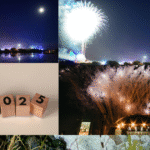Table of Contents
Introduction:
Historical reenactments are fascinating and relevant visits that can offer you deep insight and knowledge of any educational or historical delight, which is unusual to discover in any other random travel extravaganza. In our fast-paced world, where the past often demands the attention of the present with the aim that history can push you to rediscover something that can captivate your senses and float you to the rich tapestry of significance by stepping back in a time where every moment can delight your experiences,
From the Middle Ages wars to colonial settlements, all this long, unforgettable history offers a glimpse into the past like nothing else. So, embark on a journey that will cruise you across centuries by unveiling five historic destinations where history will come alive to you in reality.
Colonial Williamsburg, Virginia, USA:
Spread over almost three hundred and one acres of area, Colonial Williamsburg is a privately established foundation famous for its world’s largest living history museum. Numerous processes and activities are involved in the reenactment process, as past historical events have shown in the present in an alluring manner. Performing artisans dressed up attractively along with tools and heavily ornate jewelry to represent the character professionally can increase the glamour and demand of the living historical shows.
Step into the eighteenth century and experience the neat sculpting work of the cobblestone streets of Colonial Williamsburg. The Living History Museum carefully and precisely recreates events with a theme called Life in Colonial America. Artisans portrayed themselves with costumes that should depict the character with pure resemblance, ensuring that their performance and presentation skills should talk about the past in the present quite seamlessly. Colonial Williamsburg, Virginia, USA, has become the epic center of historical landmarks with the popularity of being the world’s largest living museum and part of the USA’s preservation movement program.
Pompeii, Italy:
Pompeii is an ancient, historically preserved city in Italy, twenty-three kilometers from the southeastern of Naples. If you are a historical enthusiast and want to study deep into archeological sites of ancient Roman history, then Pompeii, Italy, will transform your dream into reality. Cruise seamlessly into the archeological sites of Pompeii and enjoy some of the soil underneath ruins preserved for decades, where every moment will captivate your mind and senses. UNESCO has designated Pompeii, Italy, a world heritage site for its archaeological wonders.
Pompeii, Italy, is the only dedicated archeological site that will give a complete picture of the ancient Roman city and its history. Cruise yourself to the gateways of the ancient city of Pompeii, where time seems to have frozen for a while, and witness the catastrophic Mount Vesuvius volcano, which erupted during the 79th century AD and buried the cities of Pompeii by leaving debris, ashes, and ruins underneath the soil. Later excavated during the 19th and 20th centuries, some ruins have been dug out and recovered in good condition, allowing you to reflect on notable memories, see the past, and gain valuable insight into the ancient Roman lifestyle.
The archeological site of Pompeii offers a glimpse of beautiful Roman life due to its remarkable presentation, which includes grand villas, crowded streets, and ill-fated citizens who were the victims of volcano eruptions. Embark on a historical journey to Pompeii that will guide you to capture some memorable moments and gain valuable insight into one of the must-visit historical destinations that reflects on the past disaster story and present great moments. Pompeii describes the vast archaeological site of southern Italy quite flawlessly.
Plimoth Plantation, Massachusetts, USA:
Built in the form of a complex, Plimoth Plantation, Massachusetts, USA, was founded in 1947. One of the renowned living history museums, Plimoth Plantation, replicates the living history of the Plymouth colony established by English colonists in the 17th century, who are also known as pilgrims. Plimoth Plantation played a crucial role in the American colonial establishment. Experience the early days of European settlement in Plimoth Plantation. Plimoth Plantation, Massachusetts, is an iconic living history museum of pilgrims and Wampanoag people living in the same place but whose living style and nature were different.
Visitors who embark on a journey and want to explore the art of living in Massachusetts during the 1620s will be delighted to gain in-depth insight into the living practices of the Wampanoag and Pilgrim communities during their visit to this iconic landscape. Decorated in colorful costumes, skillful interpreters then portray historical figures and engage visitors in conversations that include the challenges and triumphs of 17th-century life in Plymouth Colony.
Surprisingly, to add to the fact that Plymouth Colony was one of the first successful colony establishments by the British in North America from 1620 to 1691, Plymouth Colony was the oldest colony and the first permanent settlement in the city of Massachusetts by the British. So, step in and fulfill your quest by exploring some of the oldest and most unique belongings that still exist, such as replica homes and beautiful demonstrations of craft and skills, and enlighten yourself while gaining a deeper understanding of the complex interaction between foreign settlers and Native Americans who unarguably lived together during this era.
Warwick Castle, England:
Relatively built in a small area, Warwick Castle has lots of historical significance that will foster your travel experience. Warwick is also the country town of Warwickshire, situated at a good height over the curve of the River Avon. Built by William the Conqueror (William I), king of England, the first Norman King in the year 1068, Warwick Castle is one of the most exciting and middle-aged castles and is almost 956 years old.
The place was occupied continuously during the medieval ages by Warwick families. Warwick Castle represents the unlimited history of Britain and is renowned for its spectacular live Jousting show (a martial daring art game played between two combat knights . who fight with a lance, an ancient medieval war tool, either by riding a horse or barefooted), inclusive Zog play land that has facilities such as step-free access and activities such as multisensory experiences where you can actively involve more than one body sense seamlessly.
Warwick Castle is famed for The UK’s biggest bird-prey shows. Explore the Prince castle towers and ramparts, the magnificent marvel work of the great hall, and even spend a night in a medieval-themed Knights’ village that will delight your experiences all through for sure. Warwick Castle is one of the finest castles in the heart of England. The country town is also the birthplace of iconic English playwright and poet William Shakespeare, where all the Company’s theater shows are based.
Gyeongbokgung Palace, Seoul, South Korea:
It was the power hub and center of the Joseon dynasty, which existed from 1392 to 1897. The historic power centers of the Joseons were built in 1395 by King Taejo. The total size of Gyeongbokgung Palace is approximately 415,800 square meters, and the height of the wall is almost 6 meters. Among the five top-listed beautiful places in South Korea, Seoul, Gyeongbokgung Palace is undoubtedly the most gorgeous.
Like the ancient and forbidden cities of Beijing, China, Gyeongbokgung Palace in Seoul, South Korea, is embedded structures of complex buildings integrated with a throne room (usually used for ceremonies, entertainment, and other official purposes). The King’s living quarter is captivating and surrounded by attractive lush green gardens and parks illuminated by thousands of decorative lights at night to brighten the Royal Palace. We can say that Gyeongbokgung Palace is a kind of city built inside the city and was the main royal Palace of the Joseon Dynasty.
The heritage place will captivate your experience and allow you to explore some fascinating histories of the Joseon era of South Korea, Seoul, such as royal ritual reestablishments and a wide array of artifacts displayed and costumes during the medieval period via a free guided tour. The sprawling complexes of Gyeongbokgung Palace have served as the epitome and powerhouse of Korean royalty and hospitality for decades. In the modern era, visitors can explore skillfully restored complexes and witness the change of guard ceremony, which happens several times daily. Gyeongbokgung Palace offers masterful glimpses of South Korea’s royal past, monarchy, and architectural habitat that will mesmerize your senses forever.
Key Takeaways:
Step into the Past: Immersive Historical Experiences
Walk in the footsteps of history’s giants by visiting some enchanting living historical sites while gaining a lot of pride in your exciting travel experience. Engage in reenactments, witness pivotal events, and uncover forgotten stories that faded behind the pages of history bookshelves.
Bringing History to Life: Interactive Reenactments
Participate in authentic reenactments, from medieval battles to Victorian-era balls, by deeply attaching with characters. Feel the vibe and spirit of fascinating age-old events that unfold before you. Uncover the nuances of historical events and connect with the past with new energy that perhaps offers a new dimension to uplift the society around you.
Uncover Hidden History: Exclusive Access
Engage with local authorities and gain exclusive access to restricted areas, uncovering hidden histories and untold past stories. Explore historical sites after hours or behind the scenes by taking your time and pace.
Meet the Historians: Expert Insights and Storytelling.
Meet renowned historians and experts around the globe and gain unique perspectives on various historical events and memorable incidents of the past. Engage in productive workshops such as lectures and interactive sessions with famed historians while fostering your curiosity to learn the history in detail.
Transportive Travel: Timeless Connections
Timeless travel is a journey of a lifetime that we can say once you drive on to historical reenactment exposure. Embark on a journey through time, forging connections between past and present that seamlessly intertwine at one point. Return home with a wagonload of pleasant historical thoughts by appreciating the beauty of history’s relevance and impact.
Conclusion:
Traveling through time and unraveling some unforgettable historic reenactments can offer you delight and experiences where the gateways of the past knock you into the present to rediscover some facts that perhaps will be unexplored through history books, studios, and frozen studies. At a time when the limit of your imagination can go beyond your reach, your heart starts pumping, and you want to become the witness of many historical things and wonders, then exploration is just a matter of time and well within your reach.
So, what are you waiting for? Persevere and believe your senses and drive into the depths of history by witnessing extravagant real-life history presentation shows, parallelly glaring at the pages of history books where you will navigate one window of the past to the other in uncanny circumstances and gain lifetime experiences one from the other like never before.
Be fascinated by the colonial establishment of North America in the medieval ages in the medieval ages by understanding the lives of Native Americans and foreign settlements or by traveling to the gateways of the eruption and destruction of archeological sites in ancient Pompeii, Rome, and Italy. All these scintillating destinations are waiting to transport your mind and senses across centuries, where all memories will rejuvenate and refresh your present quite sensibly.
FAQs:
Q1: What is the significance of historical reenactments in understanding past cultures?
Historical reenactments offer a glimpse into a captivating window that glares at goneby history, allowing us to relive pivotal moments and immerse ourselves in bygone eras. Recreating historical events and daily life reenactments revitalizes human history and civilization by making it more relatable and engaging with facts. Historical reenactment provides valuable educational opportunities, fostering empathy by developing a great sense of understanding with rich, diverse cultural significance.
Q2: What makes historical reenactments and living history sites so captivating?
Historical reenactments and living history sites offer a uniquely immersive experience that brings the colorful and glorified history of the past into real life. Rather than reading the history in textbooks, visitors get a glimpse by witnessing the live experience by interacting with reenactors who masterfully portray historical figures, with the ambiance that has an effect of light, sound, and action transforming you into different eras. This vivid experience makes history more tangible, live, and presentable in front of visitors by explaining the challenges, culture, and daily lives of people from centuries ago. As a visitor, the significance of living history reenactments will turn your learning into a dynamic and engaging adventure.
Q3: How do living history sites differ from traditional museums and historical landmarks?
Statistically, if we break down the comparison between living history sites and traditional museums or striking landmarks, living history sites make their mark by overpowering the static historic sites. Living history sites break away from static displays by bringing history to reality through interactive and immersive play of art. Costumed interpreters, authentic settings, and hands-on activities recreated at the backdrop of fascinating ambiance display the sensational characters of the past. More visitors participate with interest to explore fascinating events to connect emotionally with bygone era episodes.
Q4. Which historical periods are commonly reenacted in living history sites?
All the historical periods have left a long-lasting impression in our minds. While historical reenactments span across a wide range of periods, some of the most popular and frequently reenacted eras include the medieval period, the American Revolution, the Civil War, the French Revolution, and ancient civilizations that have Rome history and Viking Age Scandinavian delightful episodes. Many living history sites display specific periods by ensuring visitors witness the details of many historical moments, such as a colonial American settlement or an absorbing World War II battlefield. Such diverse periods covering all corners of historical episodes allow history enthusiasts of all interests to find an immersive experience that resonates with them.
Q5: What are some admired historical reenactments and living history sites globally?
Historical reenactment sites offer striking visibility of the past in the form of a delightful art show. Some of the dazzling historical reenactment sites are highlighted below for visitors:
Colonial Williamsburg (Virginia, USA)
The Ancient City of Pompeii (Italy)
The Viking Village (Norway)
Warwick Castle of the UK brings medieval history to life.
Medieval Spectacle in Rothenburg (Germany)
These are only a few examples, but every striking piece of content mentioned in the blog continues to hold the history that as a visitor you can explore by embarking on a journey to these living history sites.
These site visits transport visitors across centuries, recreating pivotal moments in history.







